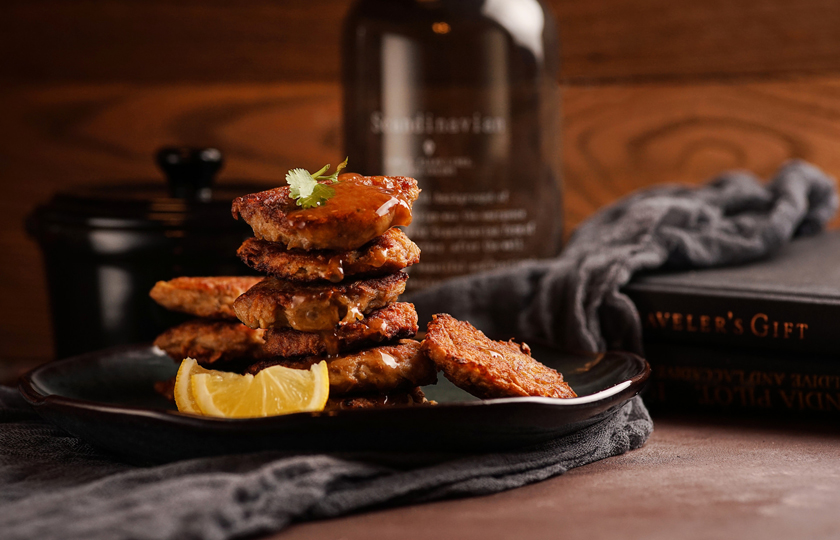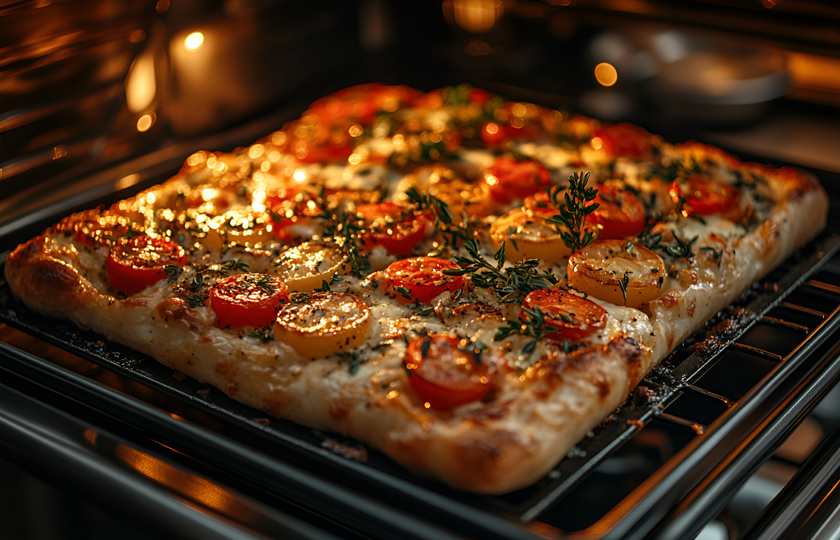Perfectly Cooked: How Long to Cook Meatloaf at 400 Degrees in Oven Per

In the wondrous world of cooking, the oven is like a magical box, and the moments inside it are always full of anticipation. When the thermometer reads 400 degrees, the meatloaf slowly rotates on the baking tray, its golden-brown crust forming while an enticing aroma fills the air. So, at this precise temperature, how long does it take for the meatloaf to reach perfect doneness? Let's unravel this cooking mystery together!
the answer
Meatloaf is typically made from a blend of pork, beef, or chicken, offering a delicious taste and rich nutrition. You can adjust the meat ratios and seasonings according to your personal preferences. At 400°F (204°C), the cooking time for meatloaf is generally 20-25 minutes, depending on the thickness of the loaf and the type of meat used:
Factors Affecting Cooking Time:
Thickness of the Meatloaf: A 1-inch thick meatloaf usually takes 20-25 minutes in a 400°F oven, while thinner loaves may only need about 20 minutes.
Oven Temperature: Make sure your oven temperature is accurate to prevent fluctuations that could affect cooking time.
Type of Meat and Fat Content: Different meats and fat levels can slightly alter cooking times. Higher-fat meatloaf may require a slightly shorter time to avoid overcooking.
Cooking Tips:
Use parchment paper or lightly grease the baking tray to prevent sticking.
Check the doneness of the meatloaf at intervals to avoid overcooking or undercooking.
Adjust the oven temperature and cooking time as needed during the cooking process.
Is it better to cook meatloaf at 350 or 400?
When it comes to cooking meatloaf at 350°F or 400°F, the choice largely depends on your cooking needs and personal taste. Here’s a detailed analysis of both temperature options:
350°F (about 177°C)
Pros:
Even Cooking: A lower temperature helps the meatloaf cook evenly throughout, reducing the risk of burning the outside.
Moisture Retention: Slow cooking allows the meatloaf to stay juicy, making it particularly suitable for thicker loaves.
Cons:
Longer Cooking Time: Typically requires 30 to 40 minutes, which is a longer wait.
400°F (about 204°C)
Pros:
Quick Cooking: A higher temperature significantly shortens cooking time, usually taking only 20 to 25 minutes.
Crispy Exterior: The high heat creates a delicious caramelized crust, enhancing flavor and texture.
Cons:
Risk of Drying Out: If not monitored closely, the meatloaf can dry out, especially if made with lean meats.
How Long to Cook Meatloaf at 375°F?
When cooking meatloaf at 375°F (about 190°C), the cooking time typically ranges from 25 to 30 minutes. The exact time depends on several factors:
Thickness of the Meatloaf: Thicker meatloaves may take closer to 30 minutes, while thinner ones usually cook in about 25 minutes.
Type of Meat: Different meats (such as beef, pork, or chicken) can affect cooking time. Using a food thermometer to check the internal temperature is a good way to ensure safety.
Oven Performance: Ovens can vary in temperature, so it's advisable to check the meatloaf's status as you approach the cooking time.
Internal Temperature
Make sure the internal temperature of the meatloaf reaches the following safe standards:
Beef and Pork: 160°F (71°C)
Chicken and Turkey: 165°F (74°C)
Resting Time
After cooking, remove the meatloaf and let it rest for 5 minutes. This allows the juices to redistribute, enhancing flavor and ensuring a juicier result.
How Long to Cook 1 Pound of Meatloaf at 400°F?
When cooking a 1-pound (approximately 454 grams) meatloaf at 400°F (about 204°C), the cooking time typically ranges from 20 to 25 minutes. The exact time may vary based on the following factors:
Thickness of the Meatloaf: Thicker meatloaves may take closer to 25 minutes, while thinner ones usually cook in about 20 minutes.
Type of Meat: Different meats (such as beef, pork, or chicken) can affect cooking time.
Oven Performance: Ovens can vary in temperature, so it's advisable to check the meatloaf’s status as you approach the cooking time.
Internal Temperature
Make sure the internal temperature of the meatloaf reaches the following safe standards:
Beef and Pork: 160°F (71°C)
Chicken and Turkey: 165°F (74°C)
Resting Time
After cooking, let the meatloaf rest for 5 minutes. This allows the juices to redistribute, enhancing flavor and ensuring a juicier result.
How Long to Cook a 2-Pound Meatloaf?
When cooking a 2-pound (approximately 907 grams) meatloaf at 400°F (about 204°C), the cooking time typically ranges from 25 to 30 minutes. Here are the detailed steps:

Cooking Steps for Meatloaf:
Preheat the Oven: Preheat your oven to 400°F (about 204°C).
Prepare the Meatloaf: Place the 2-pound meatloaf on a baking sheet. You may brush a little oil on it or line the sheet with parchment paper to prevent sticking.
Bake: Place the meatloaf in the preheated oven and bake for about 15-20 minutes, or until the internal temperature reaches 160°F (about 71°C).
Check Doneness: Periodically check the meatloaf to ensure it is fully cooked and that the surface is nicely browned and crisp.
Cooking Tips and Recommendations:
Adjust Temperature and Time: Based on the thickness of the meatloaf and your oven's actual temperature, adjust the baking time and temperature as needed.
Prevent Sticking: Use parchment paper or brush a little oil on the baking sheet to prevent the meatloaf from sticking.
Regularly Check: Regularly check the meatloaf's doneness to avoid overcooking or undercooking.
Should You Cover the Meatloaf While Cooking?
Whether to cover the meatloaf while cooking largely depends on your chosen cooking method. Here’s a breakdown of the different methods and their requirements for covering:
Oven Cooking:
Covering: Helps retain moisture, making the meatloaf more tender and preventing the surface from browning too quickly.
Not Covering: Allows the surface to brown and become crispy faster, but the inside may take longer to cook through.
Pan-Frying:
Covering: Ensures the interior cooks more evenly and helps prevent grease splatter.
Not Covering: Allows for a quicker browning of the surface, but the interior may take longer to cook thoroughly.
Steaming:
Covering: Ensures even heating through steam, keeping the meatloaf tender and moist.
Conclusion: When deciding whether to cover the meatloaf, consider your Cooking goals: if you want to maintain moisture and tenderness, cover it; if you prefer a crispy crust, leave it uncovered.
What is the secret to keeping meatloaf moist?
Here are some effective methods to ensure your meatloaf stays moist:
Add Liquid Ingredients:
Beef Broth or Stock: Incorporating a small amount of broth into the meat mixture can significantly boost moisture.
Milk or Cheese: Adding milk, yogurt, or cheese enhances both the moisture and flavor of the meatloaf.
Use Fat:
Appropriate Fat Content: Choose ground meat with the right fat content (like 80/20 ground beef) to help maintain moisture.
Add Oil or Butter: Mixing in a bit of olive oil or butter can add flavor and moisture.
Incorporate Ingredients:
Vegetables: Chopped onions, bell peppers, or mushrooms can add moisture and flavor.
Breadcrumbs: Using breadcrumbs soaked in liquid can help lock in moisture.
Seasoning:
Salt: Adding the right amount of salt when mixing the meat can help it absorb moisture, but be careful not to overdo it.
Control Cooking Temperature and Time:
Avoid Overcooking: Ensure the internal temperature reaches safe levels but avoid overcooking, which can dry out the meatloaf.
Resting Time: Allow the meatloaf to rest for a few minutes after cooking so the juices can redistribute, keeping it moist.























